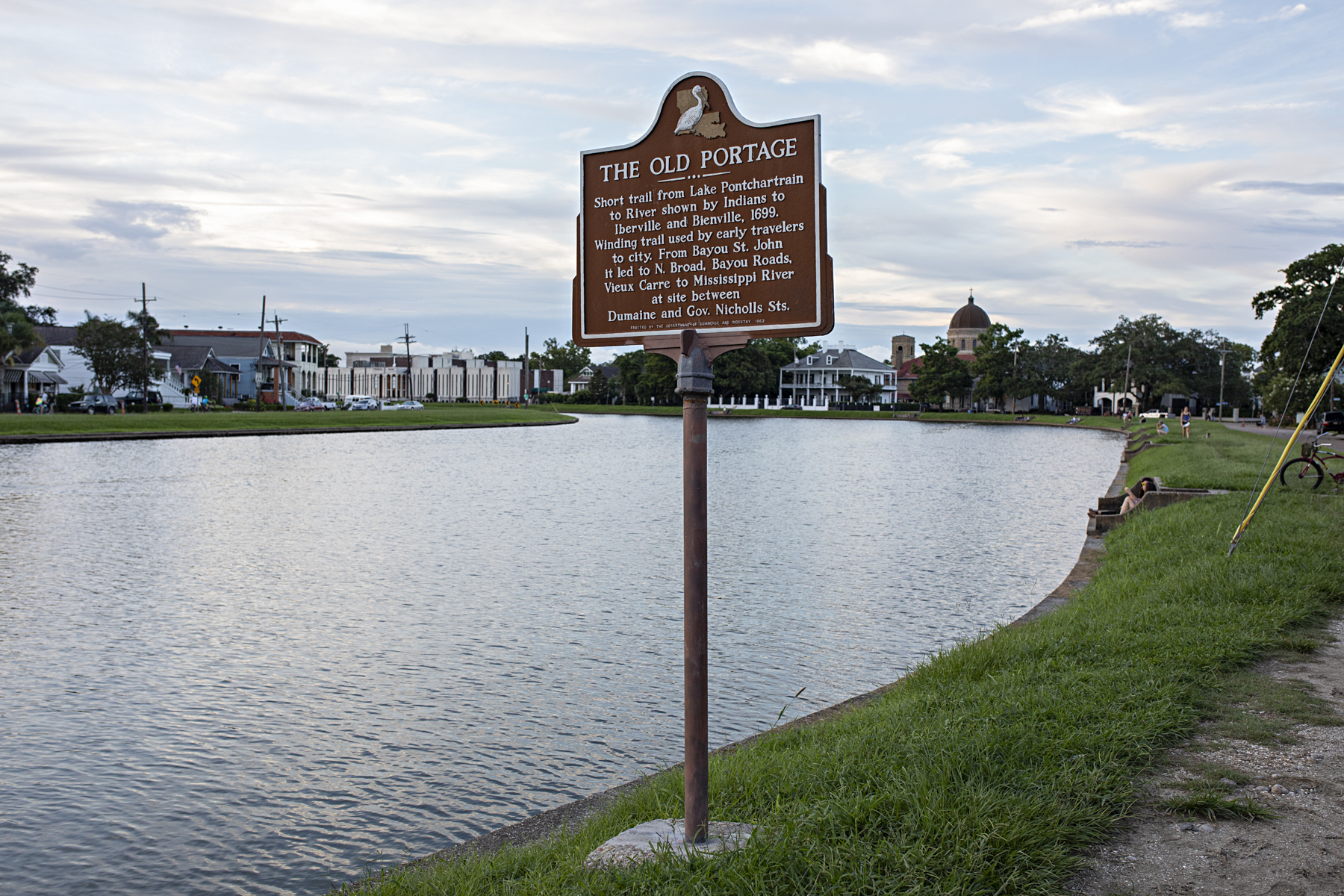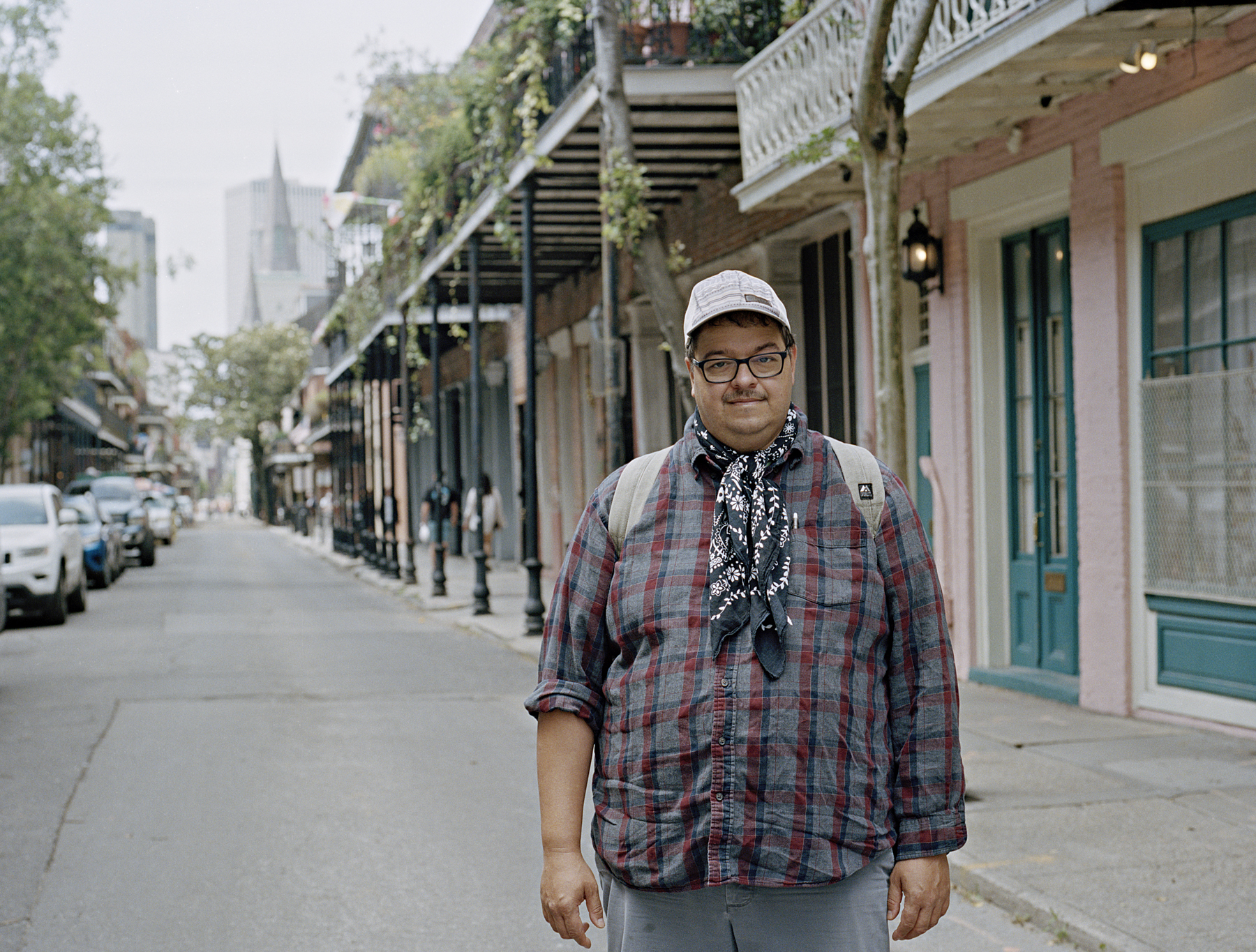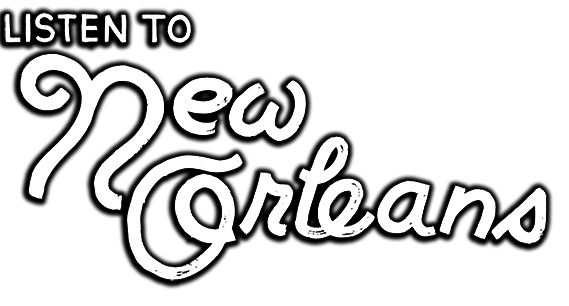“When I view this landscape, I don't see a giant forest of cypress with 3,000 year-old trees as big around as a house”

Bayou Choupic
Moss and Bell Street
Moss and Bell Street
Yil tol. Eņ hike Jeffery Darensbourg, Takapo-Išak Yukhitiki, wi Šiwat Yukhiti, ya Bulbancha keta.
Hi there. I'm Jeffery Darensbourg of the Alligator Band of the Atakapa-Ishak Nation of Indians. And I live here in Bulbancha, the place of other languages, an Indigenous name for this city. It is the original name. It refers to the mixture of Indigenous Peoples that would come here to live and trade at this confluence of waterways: the bayou, the lake, the river, and all of the surrounding waterways that feed in.
Right here at this spot, there was a road, the road went from the bayou, which we called Bayou Choupic, after a fish that swam in it. It was a pathway of trade, all the way to the river, and a way of connecting waterways, where people could portage canoes and goods to trade with one another for many centuries.
Iberville and his crew, the first European visitors to this place in 1699, witnessed coyotes running around. They witnessed bison napping on the shore of the river. They witnessed large fields of river cane, the only bamboo Indigenous to North America; a plant out of which my people would make houses, blow guns, flutes.
I used to live very near to the marker where you are standing. I'm an Indigenous person. My ancestors would trade here in the centuries before colonization. I cannot go back to that. I cannot enter a store now and speak my Indigenous language and say, "Yil tol, antol a?" and ask for what I need. When I view this landscape, I don't see a giant forest of cypress with 3,000 year-old trees as big around as a house.
And yet our culture endures here, it endures in much of the food that people associate with this area. It endures in your red beans and crawfish and pecans and your hot peppers. It endures through music that was formed at Congo Square from enslaved Africans, but also Indigenous People; Congo Square having originally been an Indigenous dancing ground of Houma People. There are still Indigenous People living here. And we still remember the past of this place, but we can not go back to that past, with its values of community, a past in which our peoples would not permit poverty, would not permit homelessness; a past in which we lived as community and took care of one another in a way that seems foreign to our present day; a past before some of the systems of oppression and environmental destruction that arose since 1699 visited this place, Bulbancha.
In Indigenous naming, a place achieves its name from whatever is the most important feature of the area. And as such Bulbancha refers not to a feature of the landscape, it refers to the people. A foundation of this place is a mixture of different groups of people coming together and interacting with each other. That was Bulbancha then, and that is Bulbancha now. Bulbancha is still a place.
I encourage you not to forget this history. And to remember that there is something lost here, something that is hidden beneath these streets, an older history, an older way of doing things, a way of taking care of each other and caring for the environment: an Indigenous way.
As we say, in our language, Ishakkoy, “hiwew.” Thank you so much for listening.
![]()
Hi there. I'm Jeffery Darensbourg of the Alligator Band of the Atakapa-Ishak Nation of Indians. And I live here in Bulbancha, the place of other languages, an Indigenous name for this city. It is the original name. It refers to the mixture of Indigenous Peoples that would come here to live and trade at this confluence of waterways: the bayou, the lake, the river, and all of the surrounding waterways that feed in.
Right here at this spot, there was a road, the road went from the bayou, which we called Bayou Choupic, after a fish that swam in it. It was a pathway of trade, all the way to the river, and a way of connecting waterways, where people could portage canoes and goods to trade with one another for many centuries.
Iberville and his crew, the first European visitors to this place in 1699, witnessed coyotes running around. They witnessed bison napping on the shore of the river. They witnessed large fields of river cane, the only bamboo Indigenous to North America; a plant out of which my people would make houses, blow guns, flutes.
I used to live very near to the marker where you are standing. I'm an Indigenous person. My ancestors would trade here in the centuries before colonization. I cannot go back to that. I cannot enter a store now and speak my Indigenous language and say, "Yil tol, antol a?" and ask for what I need. When I view this landscape, I don't see a giant forest of cypress with 3,000 year-old trees as big around as a house.
And yet our culture endures here, it endures in much of the food that people associate with this area. It endures in your red beans and crawfish and pecans and your hot peppers. It endures through music that was formed at Congo Square from enslaved Africans, but also Indigenous People; Congo Square having originally been an Indigenous dancing ground of Houma People. There are still Indigenous People living here. And we still remember the past of this place, but we can not go back to that past, with its values of community, a past in which our peoples would not permit poverty, would not permit homelessness; a past in which we lived as community and took care of one another in a way that seems foreign to our present day; a past before some of the systems of oppression and environmental destruction that arose since 1699 visited this place, Bulbancha.
In Indigenous naming, a place achieves its name from whatever is the most important feature of the area. And as such Bulbancha refers not to a feature of the landscape, it refers to the people. A foundation of this place is a mixture of different groups of people coming together and interacting with each other. That was Bulbancha then, and that is Bulbancha now. Bulbancha is still a place.
I encourage you not to forget this history. And to remember that there is something lost here, something that is hidden beneath these streets, an older history, an older way of doing things, a way of taking care of each other and caring for the environment: an Indigenous way.
As we say, in our language, Ishakkoy, “hiwew.” Thank you so much for listening.

Jeffery Darensbourg in the French Quarter, 2021
“The road was in use for centuries before colonial incursions into the area in the 1690's, and while Indigenous Peoples and cultures have endured much since then, and while colonial governments and their successors continue to have a grip on the area, there are still Natives here, and Bulbancha is still a place.”
(photo by Sarrah Danziger)
“The road was in use for centuries before colonial incursions into the area in the 1690's, and while Indigenous Peoples and cultures have endured much since then, and while colonial governments and their successors continue to have a grip on the area, there are still Natives here, and Bulbancha is still a place.”
(photo by Sarrah Danziger)

